Wikipedia:Wikipedia Signpost/2014-12-17/Featured content
Featured content
Tripping hither, tripping thither / Nobody knows why or whither / We must dance and we must sing / Round about our fairy ring!
- Joseph Noel Paton's The Quarrel of Oberon and Titania, a new featured picture. Spot the Nac Mac Feegle! (If you ask the special function / Of our never-ceasing motion, / We reply, without compunction, / That we haven't any notion!)
This Signpost "Featured content" report covers material promoted from 30 November through 6 December.
Featured articles
Two featured articles were promoted this week.
- Francis Poulenc (nominated by Tim riley) Imagine, if you will, the story of a woman whose breasts fly away, letting her take on a man's role as an incredibly effective general, and, while she/he goes out on a campaign against childbirth, her husband, dressed as a woman by her/him, tries to figure out a way to make babies while dealing with. In the second act - because this is an opera - he gives birth to 40,049 children in one day, but, luckily, they all become eminent artistes in various fields, and thus are able to support him. That's Les mamelles de Tirésias. Now imagine the mad genius capable of setting something like that to music, as well as a serious opera about a woman on the telephone, begging her lover to return to her (based on a play by Jean Cocteau!), and a ballet that attempts to depict seemingly-innocent, but secretly debauched scenes of a formal party. This is a small sample of the works of Francis Poulenc, a wonderful, but bizarre composer. Openly gay in the 1950s, but a devout Catholic; able to vary between the aforementioned surreality of Les mamelles de Tirésias, but also to compose an opera, Dialogues of the Carmelites, about nuns being guillotined during the horrors of the French Revolution: He is a fascinating man of contradictions, apparently able to succeed at whatever strange idea he turned his head to.
- Lafayette dollar (nominated by Wehwalt) The Lafayette dollar was a silver coin designed by United States Bureau of the Mint Chief Engraver Charles E. Barber. The Lafayette dollar was the only US silver dollar commemorative prior to 1983, and the first US coin to depict George Washington. Issued as part of the United States participation in the Paris World's Fair of 1900, this silver coin did not have any mint marks! Unfortunately for the US Treasury, they did not sell out, and 14,000 had to be melted down. R.S. Yeoman's 2014 edition of A Guide Book of United States Coins lists the Lafayette dollar at $650 ranging upwards to $19,000. One in best condition known was sold in 2004 for $66,700. The coin has been counterfeited from time to time. Various techniques have also been used to make genuine specimens shinier to deceive collectors, including polishing, a process that damages their surfaces. Don't polish your coins, guys out there.
- Montfort Castle, a ruined castle in modern Israel dating from the Crusades.
- The interior of Our Lady of the Gate of Dawn during a service in Lithuania
Featured lists
One featured list was promoted this week.
- Justin Timberlake discography (nominated by Tomíca and Status) Tomíca and Status bring SexyBack, SexyBack... to a featured list. Starting his musical career in boy band NSYNC (whose works are covered in a separate list), when the band went on hiatus, his solo album Justified proved immensely successful, and launched him on a path to megastardom, eclipsing his former bandmates.
Featured pictures
Eleven featured pictures were promoted this week.
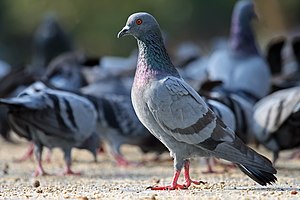
- Human subject research in a wind tunnel (created by National Advisory Committee for Aeronautics for the United States Navy, nominated by Chris Woodrich) "Blow, winds, and crack your cheeks! rage! blow!" King Lear may not have been quite referring to this experiment, but may as well have: An experiment to test the effect of wind on a human, by the time the wind gets to the top speed of the test, the poor fellow's cheeks are flapping back, and he doesn't look very comfortable.
- The Quarrel of Oberon and Titania (created by Joseph Noel Paton, nominated by SagaciousPhil) The painting The Quarrel of Oberon and Titania is painted by the Scottish artist Sir Joseph Noel Paton, in 1849, teeming with beautiful fairies in it- some who counted, like the novelist Lewis Carroll - found 165 fairies in it! (count them if you can...) It depicts a scene from William Shakespeare's comedy play, A Midsummer Night's Dream; one of Shakespeare's best known ones. In this painting the fairy queen and king Oberon and Titania, usually happily married, now quarrel with each other. And out of their quarrel will come confusion, disturbance and mischief. Some argues that the play represents the dark side of love. In the forest, two couples are beset by problems, Hermia and Lysander and Helena and Demetrius, who are both oblivious to the dark side of their love, totally unaware of what may have come of the events in the forest. We leave this fairy tale here. Gentles, do not reprehend: if you pardon, we will mend [next issue].
- Feral pigeon (created and nominated by Muhammad Mahdi Karim) Fold your flapping wings, soaring legislature, stoop to little things... like pigeons. The rock pigeon (Columba livia) is found throughout the world thanks to escaped domestic pigeons (there's good eatin' on them). As such, there are very few readers who don't know of them to some extent. However, feral pigeons are the birds of the goddess Venus, because they mate for life. Their courtship rituals are rather like a dance, the male on the ground or rooftops puffs up the feathers on the neck to appear larger and impress the girls and attract their attention. He approaches the female at a rapid walking pace while emitting cru cru cru ... often bowing and turning. The female invariably walks or flies a short distance away and the male takes up the chase, and will continue the bowing and making full- or half-pirouettes in front of her. This photograph is by prolific Tanzanian photographer Muhammad Mahdi Karim, who regularly has amazing photographs here.
- Montfort Castle (created by Eran Feldman, nominated by Tomer T) A crusader castle in Upper Galilee, now a part of Israel built by the Teutonic Knights in the 1220s, conquered by the Muslim forces in 1271. It is built on a cliff and is considered one of the finest examples of fortified building architecture in Outremer. This historic castle is beautifully photographed by Eran Feldman. Montfort Castle is from the Middle Ages. During the Third Crusade led by King Richard I of England, the crusaders set their new capital in Acre, and thus the significance of the Montfort estate increased, due to the proximity of the property to the new capital. Montfort Castle was now owned by the Teutonic Knights who fortified the property and turned it into a magnificent fortress. The knights set their headquarters, archive, and treasury at the new property in 1229. Five years later, however, after most of the Crusader strongholds had fallen, even the Montfort Castle was surrendered. The Teutonic Knights then made Venice their headquarters.
- Kebyar duduk performer (created and nominated by Chris Woodrich) The choreography was created by I Mario. The Kebyar duduk was first performed in 1925. This dance is nearly entirely performed in seated or half-seated positions by a single male dancer. He wears a long piece of golden-red fabric in a traditional design, decorated with a gold-painted pattern called prada. Even his accessories and headgear are golden and shimmering; giving him an "extra exotic traditional effect". The dance utilized then-recent innovations in Balinese gamelan music, such as music in faster tempos than previously used. The drummer, who communicates the tempo and style to the other musicians, almost competes for control of the music with the dancer, who communicates with stylized gestures in the then-prevailing rhythm, by the end of the set. Tzing-boom!
- Yule log cake (created by Jebulon, nominated by The Herald) Hark! The Herald nominates / Photographs of Yule log cakes / Chocolate cake is quickly gone / Shot in time by Jebulon! / Sponge cake rolled with buttercream / Lots of chocolate (as is seen) / To get in the Christmas mood / Make this cake part of your food! / Hark! The Herald nominates / Something good for on our plates. (We should probably breifly add that yule log or bûche de Noël is a traditional Christmas dessert, a type of sweet roulade, eaten especially in France, Quebec, and former French colonies. Traditional bûche de Noël is made from a basic yellow sponge cake, frosted, rolled to form a cylinder, filled with butter cream and frosted again on the outside. Yule log is traditionally frosted and filled with chocolate buttercream; however, many variations of the traditional recipe exist.)
- Palm Beach County Park Airport (created and nominated by WPPilot) Up in the sky, ever so high, FPs come in endless series. WPPilot is the main cause of this, an excellent aerial photographer, here getting us a strong shot looking down at Lantana Airport in Palm Beach.
- Fatata te Miti (created by Paul Gauguin, nominated by Chris Woodrich) Fatata te Miti (By the Sea) is a painting by Paul Gauguin from 1892. It depicts two young Tahitian women diving naked in the sea, seen from behind, removing their pareos and descending into the waves, with a fisherman in the background, fishing with a spear. The women plunge into the sea naked, uninhibited by Western standards which were later forced upon them. In 1891 Paul Gauguin was tired of the Western way of life, and looking for a society more unspoiled and natural than that of the European society of his time, Gauguin traveled to Tahiti for the first time. Paul Gauguin first visit resulted in a book written by him about his experiences, written as a travel journal, a most fascinating book about this exotic world, entitled Noa Noa. The word Noa Noa means in Tahitian scented or fragrant and describes the scent of the Tahitian women, as Gauguin perceived them, in his own words: A mingled perfume, half animal, half vegetable emanated from them; the perfume of their blood and of the gardenias—tiaré—which they wore in their hair.
- Chapel of the Gate of Dawn (created and nominated by David Iliff) The Chapel of the Gate of Dawn is a major site of pilgrimage in Vilnius. The Northern Renaissance painting, from c. 1630 on the altar is the Our Lady of the Gate of Dawn. The artwork soon became known as miraculous and inspired a following. A dedicated chapel, the Chapel of the Gate of Dawn was built in 1671 by the Discalced Carmelites. At the same time the painting was covered with expensive and elaborate silver and gold garments leaving only the face and hands visible. In the following centuries, the Chapel of Our Lady of the Gate of Dawn became an important part of religious life in Vilnius, and was copied in Lithuania, Poland, and diaspora communities worldwide. However this particular Lady is not to play with. She got even with some evil Swedish soldiers in 1702, when Vilnius was captured by the Swedish army during the Great Northern War. The naughty Swedes made fun of the painting, forbade songs and prayers and one soldier even fired his weapon at the painting (the bullet hole is still there). The legend tells that at dawn, the heavy iron gate of the Gate of Dawn fell and crushed and killed four Swedish soldiers. We are much thankful that our photographer David Iliff is back safe to bring us such glorious pictures.
- Nembrotha kubaryana (created by Nick Hobgood, nominated by Hafspajen) A crazy slug, looking like a green velvet pin cushion that is grazing in his underwater world of corals. It is found in the tropical waters of the Indian Ocean and Pacific at depths between 3 and 50 m. The edge of the foot and the head is bright red-orange.
- Caesio teres (created by Nick Hobgood, nominated by Hafspajen) We will go / Down below / Revels rare / We will share... wrong Gilbert and Sullivan? Eh, never mind, then. Anyway! Caesio teres, also known as the "beautiful fusilier", is a gorgeous blue and yellow fish found in the Indian Ocean and western Pacific Ocean that forms schools of glistening, neon fish, as photographed here. To honour the fish, since we are into poetry—we quote below the famous poem by Christian Morgenstern, called "The Night Song of the Fish". No, it is not a joke, it is a poem for real.
The Night Song of the Fish
ˉ
˘ ˘
ˉ ˉ ˉ
˘ ˘ ˘ ˘
ˉ ˉ ˉ
˘ ˘ ˘ ˘
ˉ ˉ ˉ
˘ ˘ ˘ ˘
ˉ ˉ ˉ
˘ ˘ ˘ ˘
ˉ ˉ ˉ
˘ ˘
ˉ
˘ ˘
ˉ ˉ ˉ
˘ ˘ ˘ ˘
ˉ ˉ ˉ
˘ ˘ ˘ ˘
ˉ ˉ ˉ
˘ ˘ ˘ ˘
ˉ ˉ ˉ
˘ ˘ ˘ ˘
ˉ ˉ ˉ
˘ ˘
ˉ
by Christian Morgenstern
.
- It's a Yule log. No need to sing about it, me from slightly earlier.





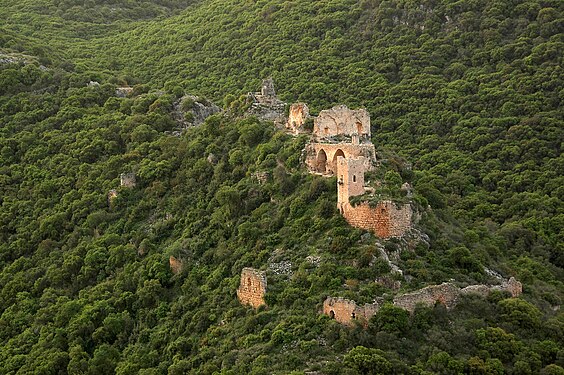
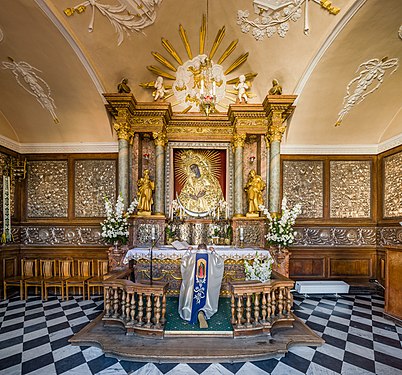
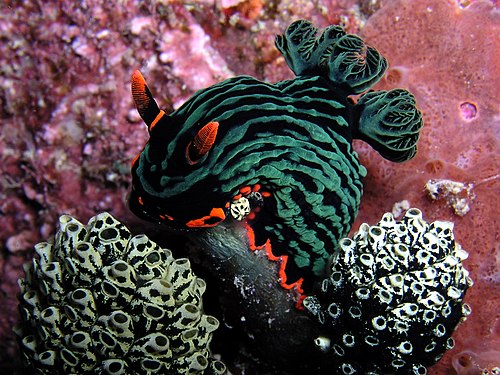
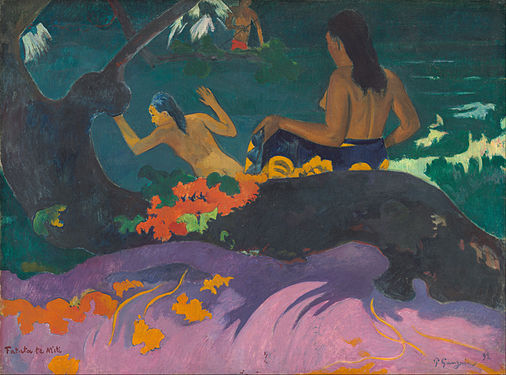
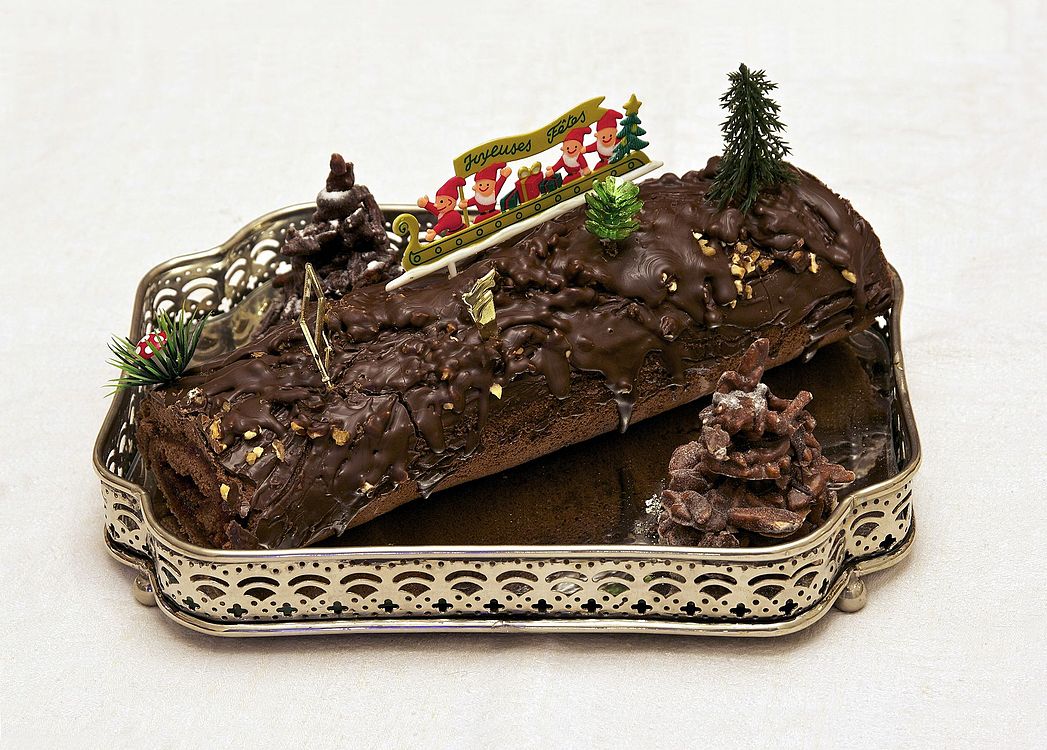

Discuss this story
correctreads well (a bit like "Swiss roll cake" used once in that article). Feel free to undo it, if you consider it OK . Widefox; talk 16:08, 20 December 2014 (UTC)[reply]